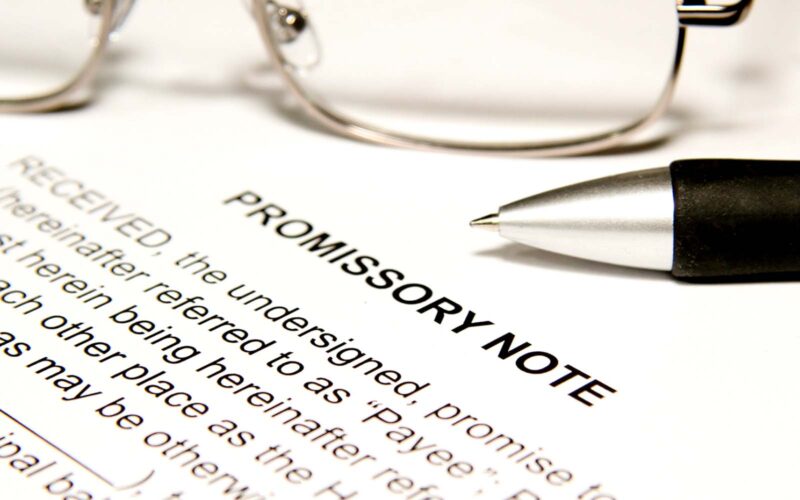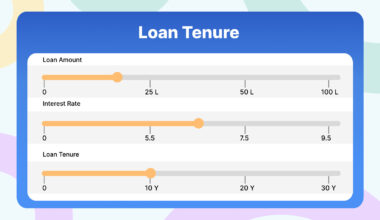Borrowing and lending money between friends and family members is done on the basis of trust. Since the terms of financial transactions are not clearly stated, it can sometimes strain the relationship between the two parties. To navigate around this uncertainty, financial institutions have come up with a unique financial instrument known as a promissory note.
To find out more about promissory note meaning, types, and promissory note format in India, keep reading.
What is a Promissory Note?
A promissory note acts like a financial instrument which forms a binding contract by law between the borrowers and the lenders. It is a written and signed promise which states that a specific amount needs to be repaid in exchange for a loan or other financing on demand or at a specified date.
- A promissory note encapsulates terms involved such as interest rate, the principal debt amount, payment schedule, maturity date, issuer’s signature and the date, and place of the issuance.
- Even when financial institutions issue a promissory note, the lender/borrower has to sign the note to take a small personal loan.
- Promissory notes also let companies get financial help from non-bank sources.
- Promissory notes are negotiable financial instruments that are issued under the Negotiable Instruments Act. They belong to either of these categories- single or joint borrowers, to be paid in instalments or in a lump sum amount, to be paid on demand or with/without interest.
Types of Promissory Notes
A promissory note can be either secured or unsecured. In either of the cases, the lender holds onto the promissory note until the debt is completely repaid.
Secured Promissory Note
A secured promissory note explains the collateral involved, which is typically property. It helps to secure the debt or amount that is borrowed. If a borrower owns the property, the lender can keep the car as collateral until the time the debt has been fully repaid. If the borrower is unable to repay the loan, the lender can take possession of the property which is the car.
Unsecured Promissory Note
An unsecured promissory note does not involve any collateral. When the borrower is unable to repay the loan, the lender can try to apply standard debt-collection methods.
How a Promissory Note Works?
A promissory note lies between IOU’s informality and the loan contract’s rigidity. An IOU acknowledges the debt and the amount that is owed by one party to another. A promissory note includes the promise to pay on demand at a predetermined date and the steps involved in the repayment.
Features of Promissory Note
A promissory note is enforceable when it includes the elements necessary to make it a legal document. Mentioned below is the typical promissory note format:
- Names of parties involved
It includes the legal names of parties who form a part of the transaction.
- Contact details of parties
It includes the address and contact number of the parties involved in the transaction.
- Loan amount
The amount being lent or borrowed.
- Repayment date
Clearly states the date on which repayment for the loan amount needs to be cleared.
- Interest rate
The promissory note must mention the interest rate calculated on the basis of the annual percentage rate charged on borrowed or lent amount.
- Final amount after adding interest
When the interest rate is being applied, the promissory note has to mention the final amount to be repaid clearly. The final amount includes the applicable interest rate and the principal loan amount.
- Pledge of security agreement
The note needs to mention a list of goods/services that are being put as loan guarantee and their value.
- Default terms
The note must mention the applicable terms clearly if the borrower fails to carry out the loan repayment by the stated time.
- Terms of repayment
The note must clearly state the terms and conditions on the basis of which the loan repayment must be done.
- Signature
The note must have the signature of the borrower and the witness. Without these signatures, the note will not have any legal value and will be considered invalid in a court of law.
Repayment of Promissory Note
A promissory note can be issued in varied structures; most of which involve repaying the principal couples with interest. The interest rate can be variable or fixed and can be calculated annually, monthly, or daily. In certain states, the interest rate is capped by the state law. An attorney or certified accountant can advise on the legal or tax implications of the promissory note’s repayment schedule.
Various Promissory note repayment approaches are explained below-
- Instalment Promissory Note
This is the most common repayment approach wherein the borrower regularly makes payments while the repayment schedule and interest payments can vary.
- Open-Ended Promissory Note
Such a note allows an individual to draw on an operating or other loan over time and repay the draw plus interest by a specific date.
- Simple Promissory Note
For smaller loan amounts, borrowers arrange for a lump-sum repayment on a specific date.
- Demand Promissory Note
Sometimes a promissory note specifies ‘’on demand’’ repayment. This means that the note has to be repaid whenever the lender demands it.
Points to Remember About Promissory Note
- A promissory note is issued under Section 4 of the Negotiable Instruments Act of 1881.
- A promissory note issued in one Indian state can be shown in another state on the perquisite terms that the note bears a valid stamp. There is no need for additional stamp duty payment.
- A promissory note is always handwritten and incorporates important features.
- The note must mention the promise of repayment clearly.
- Once a promissory note has been issued, it has to be stamped as per the rules and regulations of the Indian Stamp Act. A common practice is using a revenue stamp on the note which is signed by the borrower.
- If revenue stamps are unavailable, promissory notes can be issued on the stamp paper.
- The best way to lend money is by issuing crossed-account cheques. Details of the cheque are mentioned on the note.
- Promissory notes remain valid for a duration of 3 years from the date of execution, after which they expire and become invalid.
- No maximum limit for which amount can be lent or borrowed.
- While the signature of the witness is not a mandatory prerequisite, it is advised that the note is signed by a witness independent from the transaction in order to impart legal validity.
Conclusion:
Promissory notes are very important financial documents that give legal validity and certainty to the transaction made between two parties. Such two parties (borrower and lender) can be two individuals or two financial institutions and/or one individual and the other a financial institution. It is a paper evidence of the loan amount and outlines all important details with respect to the parties involved.






